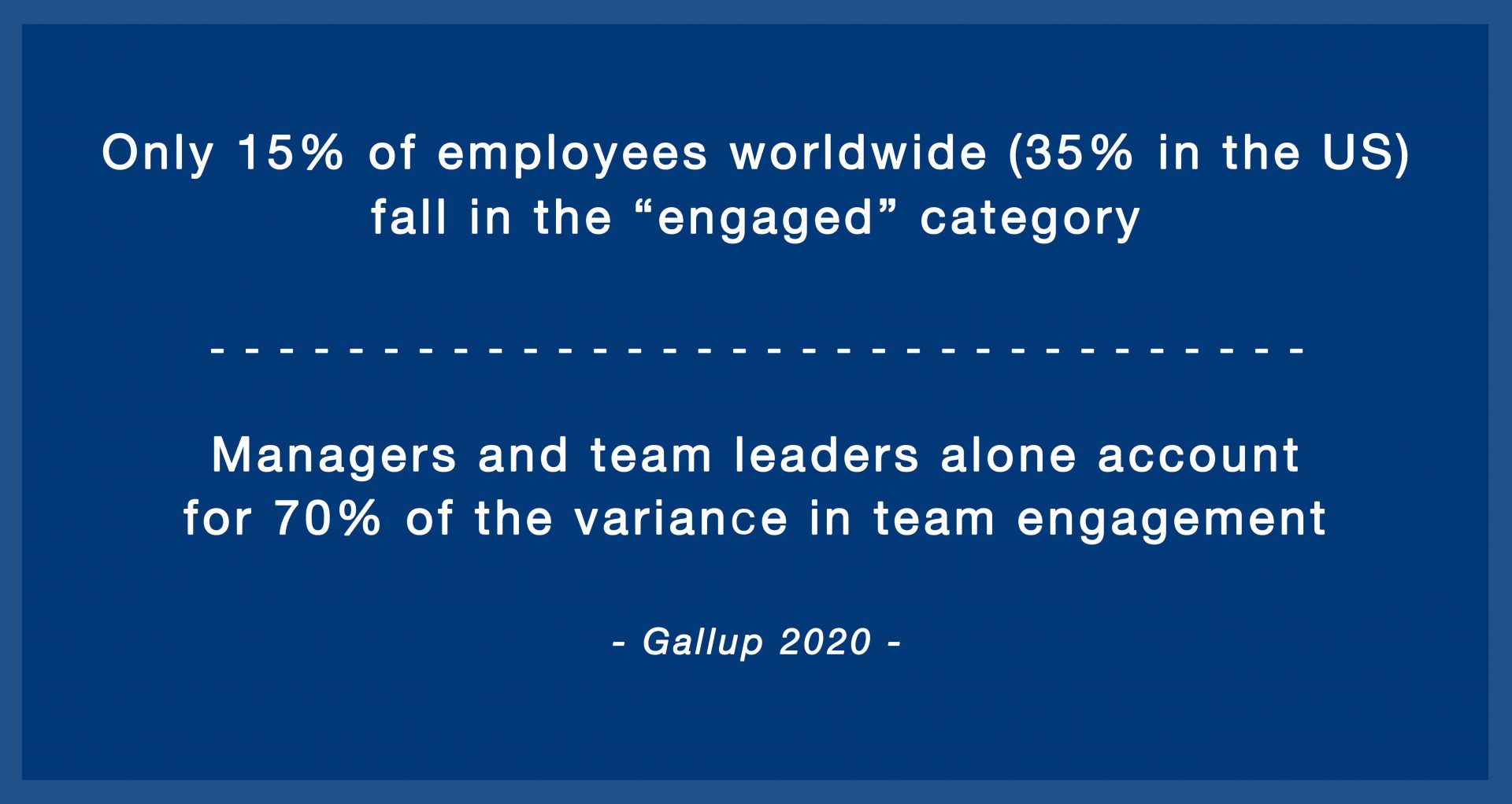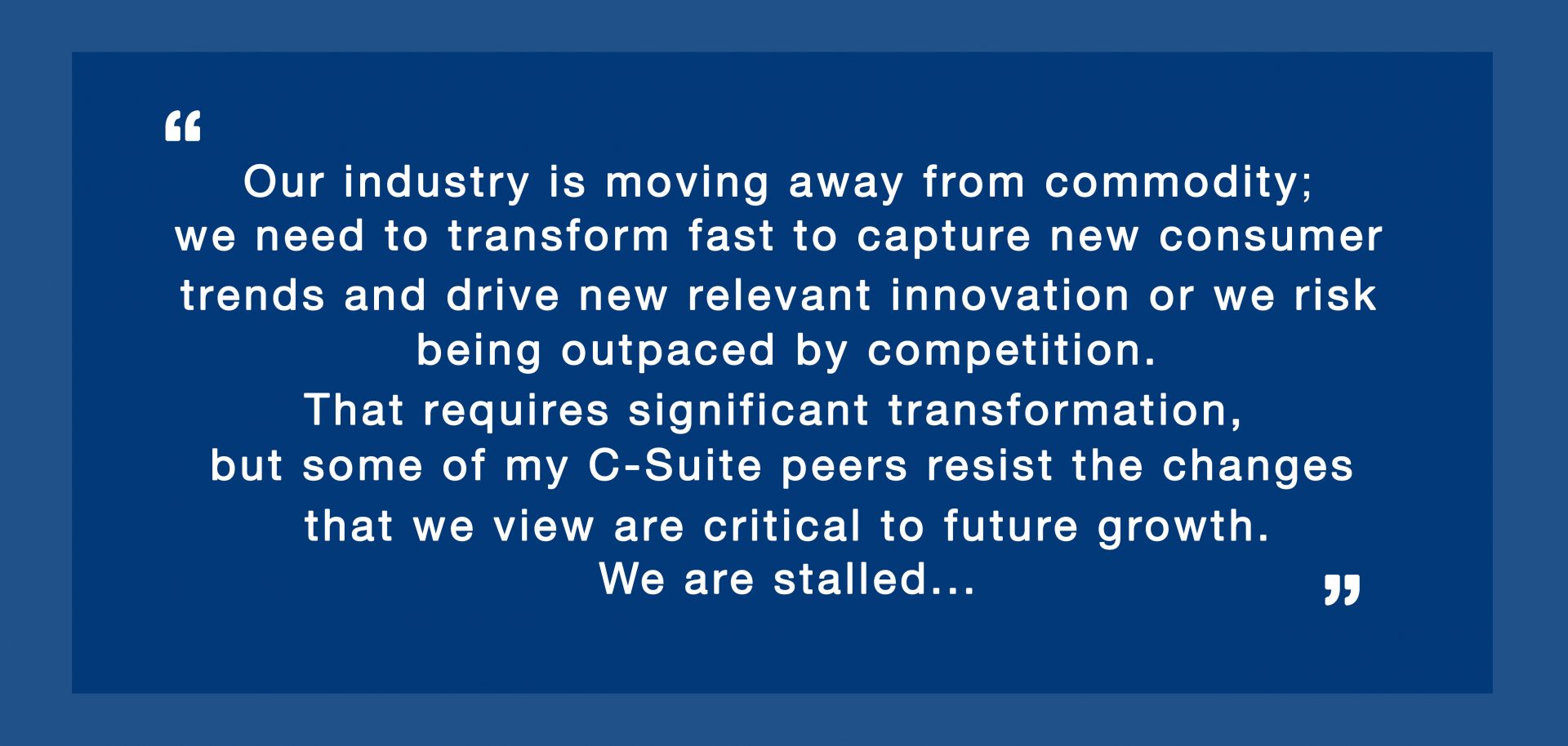Fixing Engagement To Drive Change (Part 1/3)
Engaging Leadership Partners Into The Imperative Of Change
70% of transformation projects fail, and one serious predictor of transformation failure is a lack of employee engagement – Harvard Business Review 2018
Whether leaders are engulfed in change they have not desired or prepared for (e.g. COVID-19), or whether it is a strategic necessity to remain competitive, change is upon most of us and here to stay. Whichever direction the imperative is coming from, however smart the intent and strategy, one key factor is constantly linked to success or failure of implementation of transformational programs: achieving productive engagement at all levels of organisations involved in change, starting from the top!
The criticality of engagement of employees in normal times is a very well researched and documented space, as it was realised that satisfied employees, happy and fulfilled in their jobs, and fully invested in the company mission and vision will be contributing significantly more to an organisation’s goals than non-engaged, or actively disengaged employees.
According to Gallup’s State of the Global Workplace, only 15% of employees globally are engaged in the workplace. This is already a problem for any organisation in happy sailing times, but at times of change it makes the difference between success and failure, as lack of engagement can transform quickly into disruptive disengagement, disabling even the smartest of transformation programs.
The focus of this set of 3 articles is to specifically discuss engagement as a facet of change management that hinders most of the leaders that we work with. To these leaders the change imperative is clear and critical to the development and survival of their activity (the mandate sometimes comes straight from their CEO and Board). But the challenges they face right from the start can paralyse all efforts:
- How to engage and align to the imperative of change at top leadership level when the resistance is high? Some of the company leaders engage early in the mindset to change, but how to bring on-board those resisting peers that are critical to the success of what needs to be delivered?
- How to build positive engagement in mid-level management to participate in leading the change, represent its imperative with the teams, support individuals through times of uncertainty and for some career change, and critically ensure business continuity?
- How to build drive vs. resistance in teams impacted by change? Impacts can be very varied across the workforce. Positive engagement of the majority is not an easy feat but so critical to the success of any transformation.
Failing to engage successfully on these 3 levels is a guarantee for failure for any strategic change program. However frustrating to well-intentioned leaders, handbrakes pulled at any level of the organisation will significantly hurt ability to deliver any change with success. Transformational change can only be a collective sport!
Learnings from the battlefield
Skarbek Associates and some of the companies we work with have delivered successful transformational change programs on a large to very large scale. Here are some of the tips and learnings we have gathered and structured to help companies and leaders facing similar challenges.
Engaging LEADERSHIP PARTNERS into the imperative of change
Heard early in my career: “when the general runs, the infantry walks, when the general walks the infantry stops, when the general stops the infantry sits down, when the general sits down, the infantry sleeps and plans for rebellion”. As a starting point to any transformational program, senior leadership need to gather and quickly start running as one ahead of the rest (and in the same direction!) to even stand a chance of mobilizing organisations positively and productively behind them.

Some of the dynamics that might affect leaders’ mindset and willingness to transform as needed include:
- Fear of being incompetent in the new world – I am successful today, will I still be in the new world?
- Threats to their identity and reputation, internally and externally
- Anxiety in front of the mammoth task, the risks of failure and of possible personal impact
- Fear of losing their standing and possibly their job, threatening basic survival need of a job and a pay cheque
- Victimisation (this is imposed on me) vs. change being driven by me
- Wanting to protect organisations and people and reluctance to bring yet more uncertainty to teams
Some approaches and tools to consider to bring leadership team partners on side:
- Vision setting or check-in – Talks of change can move to the HOW before the WHY and WHAT were even discussed, often leading to very tactical and defensive dynamics. Engaging leadership teams in collective envisioning of the world that could be is a critical starting point, bringing focus to the intent and vision via a discussion of possibilities, while quashing potentially highly emotional and tactical early dynamics. Having this well-defined will also provide an anchor that teams will be able to come back to throughout the change and regain motivation at various phases of the transformation. A clear vision will then enable leadership teams to explore WHAT needs to be true to deliver this vision and collectively commission the work on the HOW via building and testing of hypotheses.
- Health check study – A non-intrusive methodology looking for a broad view from the inside of competencies, strengths and weaknesses giving a picture at a point in time of the health of an organisation and its preparedness for the context if faces. Insights and data (qualitative and quantitative) gathered throughout the organisation can help a leadership team make a non-personal case for the need / imperative for change.
- After Action Reviews – Deep diving collectively into route causes for challenges that the organisation has had in the delivery of innovation can help crystallise what’s needed for success and needed associated changes.
- Bottom-up + top-down – Leverage and encourage grass-root “healthy rebellion” to associate bottom-up change energy of individuals at the contact with the changing ground (consumers, eco-systems, technology, etc) to accelerate leadership “realisation” and strengthen cohesion behind imperative to transform. It is always significantly easier to push for change when part of the organisation is already there.
- Build alliances – While some of the C-Suite leaders might not be directly involved in some elements of transformation (for example a business team might not be 100% involved in details of a transformation involving change or roles and responsibilities between R&D and Supply Chain), alliance with influential business leaders in getting support behind what’s needed to deliver the company vision can go far in getting operational leaders to rethink and line-up to needed changes.
- Get external perspectives – When internal dynamics, politics and issues of trust affect the objectivity of debates, or when perspectives lack to capture a broad view into possibilities and implications, getting external perspectives into organisational fitness to deliver growth objectives and advise into possible models in the context of industry benchmarks can enable a fast fact based and objective healthy debate.
- CEO mandate – At the end of the road, if all else fails and if the company culture is for leaders to line-up positively behind a decision made even if consensus was not reached, getting the CEO to make a decision for implementation will have to be the way. A mandate without a strong foundational leadership culture as a pre-requisite will not go down well though and could lead to rebellion and power plays in C-suite.
In Part 2 and 3, we explore tools and tips to drive positive engagement in support of transformation with mid-level management, and teams respectively.
Find out more about how Skarbek Associates can help you in your transformation project by getting in touch.
